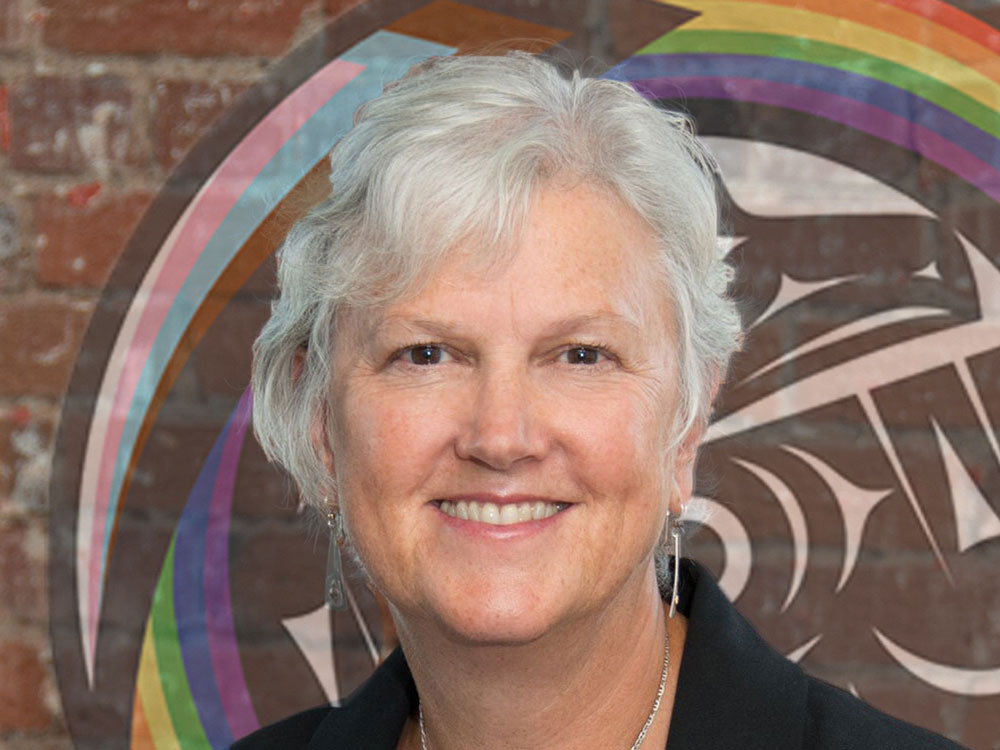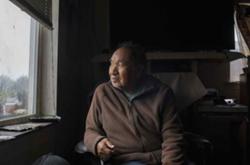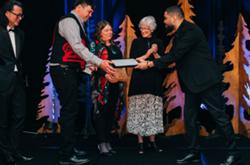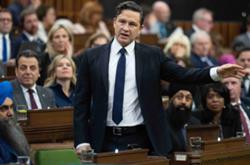“There’s no legitimate public debate about transgender and non-binary equality,” Jennifer Charlesworth, B.C.’s Representative for Children and Youth, told media during a press conference last week.
Yet for many gender-diverse young people in British Columbia today, their lives are made much harder by the “debate” happening around them.
News media are full of stories about anti-transgender bills in the United States. In Canada, the government of New Brunswick recently made controversial changes to school supports for transgender and Two-Spirit students that the province’s child and youth advocate says endanger children’s safety.
There have been anti-trans protests during school board meetings and on highway overpasses. Even the BC Conservatives shared transphobic messaging as part of their campaign during a recent provincial byelection, prompting the BC Green Party and BC NDP to release a rare joint statement condemning a Conservative candidate’s views.
But a new report from Charlesworth’s office shows Two Spirit, transgender, non-binary and gender diverse kids and youth have been subjected to mistreatment long before this latest spate of hate.
“The Right to Thrive: An Urgent Call to Recognize, Respect and Nurture Two Spirit, Trans, Non-Binary and other Gender Diverse Children and Youth” was inspired by research from the Representative for Children and Youth’s office that found much higher rates of suicide attempts and ideation among trans and Two-Spirit youth receiving provincial supports than among their cisgender peers. (“Cisgender” is a term referring to people whose gender matches their sex assigned at birth.)
From 2018 to 2022, 44 per cent of critically injured Two Spirit, transgender, non-binary and gender diverse youth receiving supports had made suicide attempts and/or expressed suicidal ideation, compared to just 22 per cent of critically injured cisgender females and 14 per cent of critically injured cisgender males. For the purpose of the report “critically injured” refers to either an injury that causes a child’s death or results in serious and/or long-term health impairment.
Yet only 4.5 per cent of B.C. youth identify as Two Spirit, transgender, non-binary and/or gender diverse.
At a press conference, Charlesworth shared the story of “Robin,” an Indigenous and gender-fluid young person who was 11-years-old when they first attempted suicide after their family came into contact with child welfare workers.
“At ages we hope children will be looking forward to middle school and high school, enjoying time with friends, we instead have children who feel that their lives are so difficult they are thinking about suicide.”
Two Spirit and trans youth also had two to three times the rate of mental health challenges, as well as higher rates of eating disorders, substance usage, neurodivergence diagnoses and exposure to family violence than their cisgender peers. They were also more likely to be the victims of sexual assault.
Two-thirds of gender diverse kids who experienced a critical injury from 2018 to 2022 lived in government-funded group homes.
The report does not name them, but one prominent example of a tragedy involving a gender diverse young person is the death of 14-year-old Noelle “Ellie” O’Soup, an Indigenous non-binary youth who went missing from their Port Coquitlam group home in 2021. Their body was discovered in 2022 in a single-room occupancy hotel room in the Downtown Eastside.
The report makes clear it isn’t their gender identity that makes young trans and Two-Spirit people more susceptible to self-harm and thoughts of suicide, but rather a lack of gender-affirming care, which includes using a young person’s stated names and pronouns, facilitating access to peer groups and culturally appropriate and gender-affirming mental health supports and mentors, parental support and appropriate medical care.
“We hoped to have youth presenting with us today, but the rise of hate and intolerance is such that we felt it was too risky. That’s the reality of the climate that we’re living in right now, it’s also the reason this report was so important,” said Charlesworth, adding it was the first report from her office to focus on trans youth.
But young people were involved in the creation of the report, via research the representative’s office commissioned from the University of British Columbia’s Stigma and Resilience Among Vulnerable Youth Centre.
The centre conducted two literature reviews of studies on mental health and substance use care experiences and access for trans and non-binary youth, as well as experiences in government care. They also analyzed data from a B.C. and federal youth survey and interviewed 15 Two Spirit, transgender, non-binary and/or gender diverse youth aged 16 to 23 across B.C. — six of whom are Indigenous — currently receiving government supports.
Young people told the centre about being misgendered and “deadnamed” — being referred to by their birth name instead of the chosen name that aligns with their gender identity — and facing other forms of transphobic discrimination and violence at home, as well as in child welfare and medical settings.
Others had issues accessing gender-affirming medical care in rural locations or found waitlists for services were too long.
Some of those young people, including Robin, preferred to stay in “precarious” shelter and housing situations rather than remain in their own child welfare placements because of transphobia.
“But they also described clearly what it looked like when they had an informed and caring health-care provider or a supportive foster parent; what it felt like when they were seen and affirmed for their identity, and how it transformed their lives,” said Elizabeth Saewyc, a UBC nursing professor and executive director of Stigma and Resilience Among Vulnerable Youth Centre, who spoke at the press conference with Charlesworth.
“The young people we interviewed shared their joy in who they were. They told us what they like about their gender. They all used words like ‘freedom,’ ‘confidence’ and ‘enjoyment.’”
The report includes eight recommendations for change, four specifically for the Ministry of Children and Family Development, while the rest also include the health, education and mental health and addictions ministries.
Recommendations include gender-affirming care training for foster and adoptive parents; tasking the Health Ministry with the design and implementation of a cross-government commitment to gender-affirming care, including the establishment of principles like equitable and inclusive access, trauma-awareness and cultural safety and relevance; removing barriers to gender-affirming support like racism, waitlists, gender-affirming doctor shortages and lack-of-parental support for trans and Two-Spirit kids and youth with multiple mental and physical health needs; and legislation or regulatory changes protecting trans and Two-Spirit kids and youth from misinformation and disinformation about the trans, Two-Spirit and gender-diverse population.
Timelines for recommendation implementation range from this October to March 2025, with the representative’s office pledging to conduct annual accountability reports on government’s progress.
“It requires a whole of government and a whole of system approach to ensure that people understand what we’re dealing with and how best to support children along the spectrum of gender-affirming care,” Charlesworth said.
The Tyee reached out to the education, health, mental health and addictions and children and family development ministries for comment. Only Children and Family Development Minister Mitzi Dean responded with an emailed statement that her ministry is committed to supporting all young people in a gender, gender expression and sexuality-affirming way.
“For example, we recently updated our records system to include a non-binary gender option so that gender diverse youth served by the ministry are not forced to select a binary option and so they can receive services in a way that reflects who they are,” Dean’s statement read.
“We welcome this feedback about how we can be more responsive to the needs of children and youth who may be more vulnerable.”
Demonstrating care for trans and Two-Spirit kids and youth won’t just improve their lives, Saewyc and Charlesworth said, but lift stress and anxiety from their loved ones, while showing all young people they deserve safety and respect.
“Any gender non-conforming or slightly differently presenting young people who don’t fit some very narrow stereotype of a gender expression can be caught in the hate,” said Saewyc, referencing a recent incident at a Kelowna school sports day where a nine-year-old cisgender girl was accosted by a stranger alleging she was transgender.
“All the other young people who see those kinds of actions directed towards a cisgender or trans or gender diverse youth, are also going to have less inclination to be involved in sports.” ![]()
Read more: Rights + Justice, BC Politics, Gender + Sexuality

















Tyee Commenting Guidelines
Comments that violate guidelines risk being deleted, and violations may result in a temporary or permanent user ban. Maintain the spirit of good conversation to stay in the discussion and be patient with moderators. Comments are reviewed regularly but not in real time.
Do:
Do not: